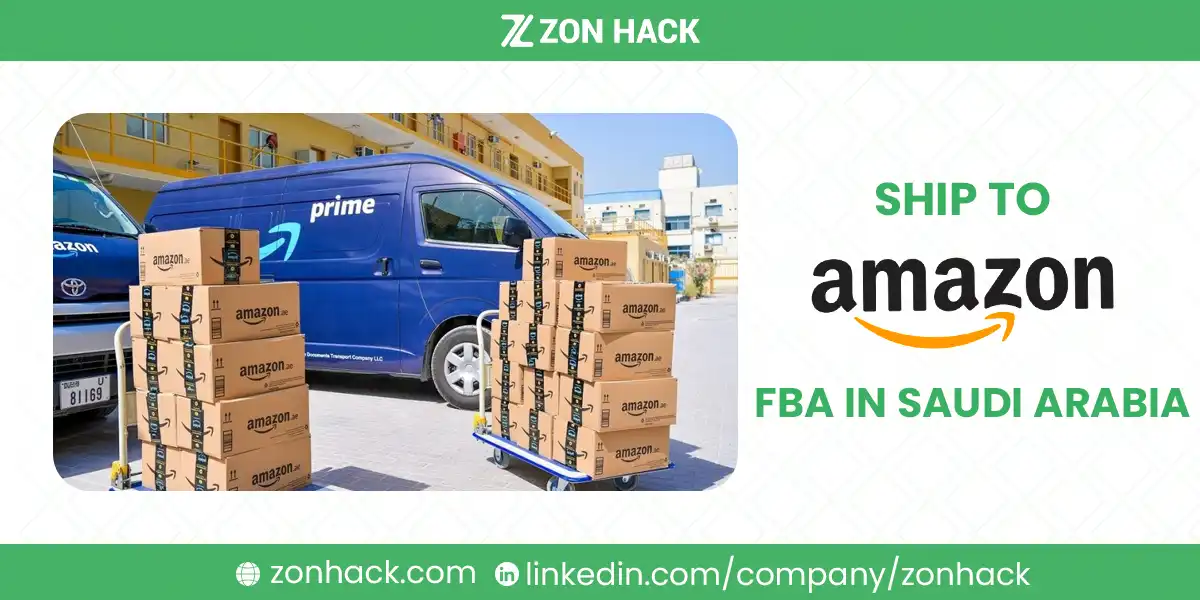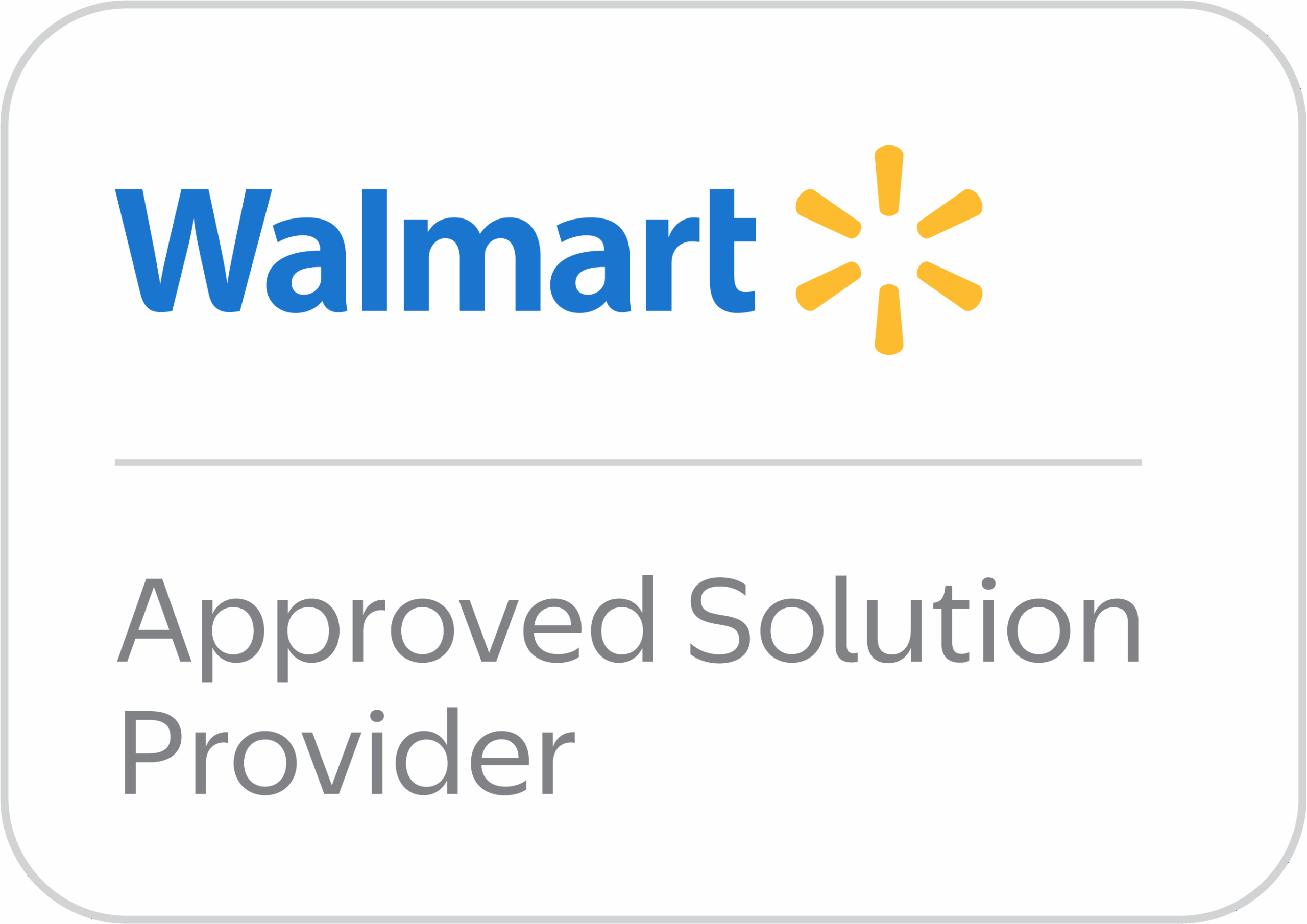If you’re looking to grow your eCommerce business in the Gulf region, Amazon.sa is a powerful platform to tap into. With Saudi Arabia’s eCommerce market projected to hit $20 billion by 2025, the opportunity is real—and growing fast.
But navigating Fulfillment by Amazon (FBA) in the Kingdom of Saudi Arabia (KSA) can seem overwhelming, especially if you’re used to shipping within North America or Europe. The rules are different, the paperwork is tighter, and the penalties for getting it wrong are steeper.
Yet, if done right, Amazon FBA in Saudi Arabia offers tremendous advantages:
- Prime-eligible delivery across the KSA
- Local language customer support
- And higher consumer trust thanks to the Fulfilled by Amazon badge.
In this detailed guide by ZonHack, we break down the entire process: from setting up your seller account and prepping shipments to clearing customs and scaling your business in the Saudi market. Let’s start at the beginning.
What Is Amazon FBA and How It Works in KSA
Fulfillment by Amazon (FBA) is Amazon’s end-to-end logistics service. Sellers store their products in Amazon’s warehouse, and Amazon handles the picking, packing, shipping, and even returns.
In Saudi Arabia, Amazon currently operates two major FBA fulfillment centers:
- One in Riyadh
- One in Jeddah
When you use FBA in KSA, your products are stored in these local centers, making delivery faster and more reliable for Saudi customers. Plus, your listings display the Fulfilled by Amazon badge—boosting conversion rates significantly.
Why Use FBA for Amazon.sa?
The advantages of FBA logistics in Saudi Arabia go beyond just convenience:
- Access to Amazon Prime customers who expect fast, free shipping
- Higher visibility in search results
- Automatic customer service handling, in Arabic and English
- Better feedback and reviews, since fulfillment issues are minimized
And most importantly, FBA gives you operational scalability—freeing you from managing your own warehouse or delivery fleet in the Middle East.
Setting Up Your Amazon Seller Account (Saudi Arabia)
Step 1: Create and Verify Your Account
To start selling on Amazon.sa, head to Amazon Seller Central MENA and register a seller account. Choose Amazon.sa as your primary marketplace.
Verification is strict in Saudi Arabia, and your account won’t go live until your identity is fully validated.
You’ll need to provide:
- A valid passport or Saudi National ID
- A commercial registration certificate (CR) or trade license
- A Saudi or international credit card
- A Saudi/local bank account
- A recent utility bill or bank statement showing your business address
Complete the Seller Identity Verification (SIV) process to activate your account. This often includes a video call and cross-checking document names and addresses.
ZonHack Tip: Make sure all documents match exactly, including spelling and formatting. Mismatches can delay your approval by weeks.
Product Compliance and Labeling in Saudi Arabia
Know What You Can (and Cannot) Sell
Saudi Arabia has strict product regulations, especially on imports. Not every product is eligible for FBA.
Check Amazon’s KSA restricted products list and local Saudi Customs laws.
Here’s what you need to keep in mind:
- Prohibited items include: alcohol, pork, religious texts not approved for public distribution, and narcotics.
- Controlled items like cosmetics, electronics, and supplements require additional approval.
- For most imports, you’ll need SABER certification—a conformity assessment system enforced by the Saudi Standards, Metrology and Quality Organization (SASO).
If your product falls under the SFDA (Saudi Food and Drug Authority) or CITC (for telecom/electronics), make sure you obtain the right licenses.
Quote: “Failure to comply with SABER or SFDA regulations can lead to fines, rejected shipments, or bans from Amazon.sa,” says logistics consultant Ahmed Al-Mutairi, who handles FBA imports for GCC-based brands.
Labeling, Prep, and Packaging Standards
Amazon expects every product entering an FBA warehouse to be barcode-ready, properly prepped, and compliant with safety guidelines.
Here’s how to meet the standard:
- Apply FNSKU barcodes on every individual unit (unless you’re using Amazon’s labeling service).
- Use high-quality packaging that protects against heat, humidity, and vibration during transit.
- No mixed SKUs inside a carton unless properly labeled.
- Use bubble wrap, polybags, and suffocation warnings where required.
- If shipping pallets, follow Amazon KSA’s pallet dimensions and stacking rules.
ZonHack recommends working with a pre-inspection agency in your country of origin. This helps catch errors before they become expensive problems later.
Shipping to Amazon FBA in Saudi Arabia
Shipping to KSA requires understanding both international freight logistics and Amazon’s local inbound rules.
Understand DDP Terms and IOR Requirements
Amazon Saudi Arabia will not handle customs clearance on your behalf. They also don’t serve as the Importer of Record (IOR).
You or your logistics partner must:
- Ship using Delivered Duty Paid (DDP) terms
- Appoint a valid IOR
- Prepay customs duties and 15% VAT
- Ensure all regulatory paperwork is accurate
Important: Amazon won’t accept shipments unless all documentation is in order and duties are cleared before delivery.
Choose the Right Freight Method for KSA
Your shipping method affects both cost and delivery speed:
- Air freight is faster (3–7 days) but expensive. Best for lightweight or urgent inventory.
- Sea freight takes 20–30 days. Ideal for bulk shipments and higher margins.
- Courier services like DHL, Aramex, or FedEx work well for small or test shipments.
Many successful ZonHack clients use a hybrid approach—sending bestsellers by air and slower-moving inventory by sea.
Work with a Freight Forwarder Who Knows FBA KSA
If this is your first time shipping to Amazon.sa, do not go it alone. Hire a freight forwarder who:
- Knows Amazon’s FBA warehouse intake process
- Can offer labeling, bundling, and repacking if needed
- Can act as your Importer of Record
- Has presence or partnerships in KSA for final-mile delivery
Some global freight forwarders like Flexport, Unicargo, and Zencargo now offer KSA-specific FBA support. Be sure to request an “All-in-One” quote that includes:
- Origin pickup
- Export clearance
- Freight cost
- Import duties + VAT
- Final delivery to Amazon’s KSA warehouse
Shipping Plan Creation and Delivery to Amazon
Once your shipment is ready:
- Log into Seller Central and create a Shipping Plan.
- Enter product dimensions, weights, and quantities.
- Download and print box and pallet labels.
- If using Amazon’s partnered carrier (where available), book a delivery appointment via Carrier Central.
- Coordinate the final-mile trucking to the Riyadh or Jeddah fulfillment center.
Keep tracking IDs handy and ensure the carrier updates Amazon on delivery progress.
Amazon KSA FBA Costs and Financial Planning
Understanding Amazon FBA Saudi Arabia Fee Structure
One of the first steps in building a profitable FBA business in Saudi Arabia is knowing your cost structure.
Amazon FBA KSA charges two main types of fees: referral fees and fulfillment fees.
Referral fees range between 5% to 15%, depending on the product category. For instance, consumer electronics generally incur a 5% fee, while beauty or fashion products can reach up to 15%.
Fulfillment fees are charged based on the size and weight of the item. For example:
| Package Type | Weight | Fulfillment Fee (SAR) |
| Standard (Small) | Up to 0.25 kg | 7.2 SAR |
| Standard (Medium) | 0.25 – 0.5 kg | 9.0 SAR |
| Oversize (Large) | Above 1 kg | Varies |
Storage fees also apply monthly. The typical rate is:
- 3 SAR per cubic foot for standard storage.
- Additional long-term storage fees for inventory stored over 365 days.
To avoid surprises, use Amazon’s official FBA Revenue Calculator for Saudi Arabia to simulate your profit margins.
VAT and Tax Compliance in Saudi Arabia
Saudi Arabia applies a 15% Value Added Tax (VAT) on all commercial transactions. As a seller, whether you’re a resident or not, you’re responsible for VAT compliance.
Here’s what that includes:
- Registering for VAT with ZATCA (Zakat, Tax and Customs Authority).
- Filing monthly or quarterly VAT returns.
- Issuing proper VAT invoices.
- Including VAT in your Amazon.sa listing prices.
Amazon does not withhold or remit VAT for you in KSA. You’re required to handle it independently.
Register for VAT at zatca.gov.sa — the process usually takes a few business days but may require extra verification for non-resident sellers.
Tip: Many sellers partner with local tax consultants in Saudi Arabia to manage VAT registration and ongoing compliance. ZonHack can connect you with vetted professionals to simplify this process.
Mitigating Shipping and Customs Costs
Shipping to Saudi Arabia isn’t cheap — but it doesn’t have to kill your margins either.
Many new sellers make the mistake of underestimating hidden costs like demurrage (port storage), inspection fees, documentation errors, or unexpected customs duties.
To avoid this:
- Ask your freight forwarder for a complete cost breakdown, including:
- Customs duties
- VAT
- Documentation fees
- Port handling
- Delivery to Amazon FBA warehouse
- Customs duties
- Ship outside of peak seasons (like Q4) when freight costs can surge by 30–50%.
- Consider including a 10–15% pricing buffer in your product pricing to absorb unforeseen logistics expenses.
Inventory Management, Compliance & Scaling in KSA
Managing Lead Times and Forecasting
Saudi Arabia is a growing market — but one where delays can disrupt your momentum.
From supplier manufacturing timelines to Amazon check-in delays, your supply chain needs to be tight.
Typical lead time components for FBA KSA:
- Production (China, India, etc.): 15–40 days
- Ocean freight to KSA: 18–30 days
- Customs and final-mile delivery: 5–10 days
- Amazon check-in and stow: 3–7 days
To stay in stock:
- Build 45–60 days of buffer inventory
- Regularly adjust forecasts based on seasonality and sales trends
- Automate alerts for low inventory thresholds inside Seller Central
ZonHack Tip: We recommend using restock reports and exporting historical sales data to create rolling forecasts. Our clients who automate reordering reduce stockouts by up to 40%.
Inventory Control Best Practices
The KSA market sees strong seasonality — especially during Ramadan, Eid, and Back to School.
To avoid overstocking or running dry:
- Monitor your inventory health report in Seller Central.
- Track sell-through rate to identify slow-moving stock.
- Remove or liquidate inventory that hasn’t sold within 90–120 days.
Also, account for regional shopping behavior. Some items like electronics sell well year-round, while others spike seasonally.
Invest in a demand-based replenishment strategy rather than shipping large volumes once or twice a year.
Preparing for Seasonal Spikes and Local Challenges
Saudi Arabia’s eCommerce peaks during:
- Ramadan & Eid al-Fitr: Huge surges in gifting, home goods, and fashion
- Hajj season: Increase in essentials and travel-related products
- Back to School: Stationery, electronics, and schoolwear
- Q4 / Black Friday / White Friday: One of the largest sales events in KSA
To prepare:
- Plan your shipments at least 60 days in advance
- Use 3PLs or staging warehouses in KSA to store reserve stock
- Partner with local couriers or flexible freight agents to scale during demand spikes
Bonus Insight: Sellers using multi-modal logistics (air + sea) during high seasons tend to achieve faster turnaround without excessive costs.
Staying Compliant with Amazon and Saudi Laws
Selling in KSA requires ongoing compliance, both with Amazon’s FBA rules and Saudi regulations.
Check these regularly:
- Amazon FBA prep and packaging standards
- SABER certification status for imported products
- VAT documentation for every listing and order
- Customs classification codes to prevent misdeclaration issues
If you’re selling hazardous items, healthcare, or electronics, ensure all relevant approvals are obtained before shipment. Delays at customs can take weeks — and cost you in storage and missed sales.
ZonHack offers seller support plans that include compliance monitoring, especially for fast-moving SKUs or high-risk product categories.
Scale Your Amazon Business in KSA with Confidence
Selling via Amazon FBA in Saudi Arabia might seem complex at first — regulations, shipping logistics, customs, and taxes all need attention. But once set up properly, it becomes one of the fastest-growing eCommerce channels in the MENA region.
To recap:
- Set up your Amazon.sa account with accurate KYC documentation.
- Use DDP shipping terms and appoint an Importer of Record.
- Ensure regulatory compliance (SABER, SFDA, VAT).
- Use professional freight forwarders and stay proactive with inspections and packaging.
- Plan inventory ahead of seasonal demand and leverage local warehousing if needed.
- Monitor compliance and seller performance closely.
ZonHack is here to help — from account setup and product compliance to end-to-end logistics, forecasting, and strategy. We’ve helped brands not only enter the Saudi market, but thrive in it.
FAQs: Quick Answers for Amazon FBA KSA Sellers
Do I need a VAT registration to sell on Amazon.sa?
Yes. All sellers, local or foreign, must register for VAT and file returns with ZATCA.
Can Amazon act as my Importer of Record in Saudi Arabia?
No. Amazon does not offer IOR services. You must appoint your own via a freight forwarder.
What are the Amazon FBA fulfillment centers in KSA?
Amazon currently operates FBA warehouses in Riyadh and Jeddah.
Is SABER certification required for all products?
Yes. Any imported product into Saudi Arabia must be registered through the SABER system.




